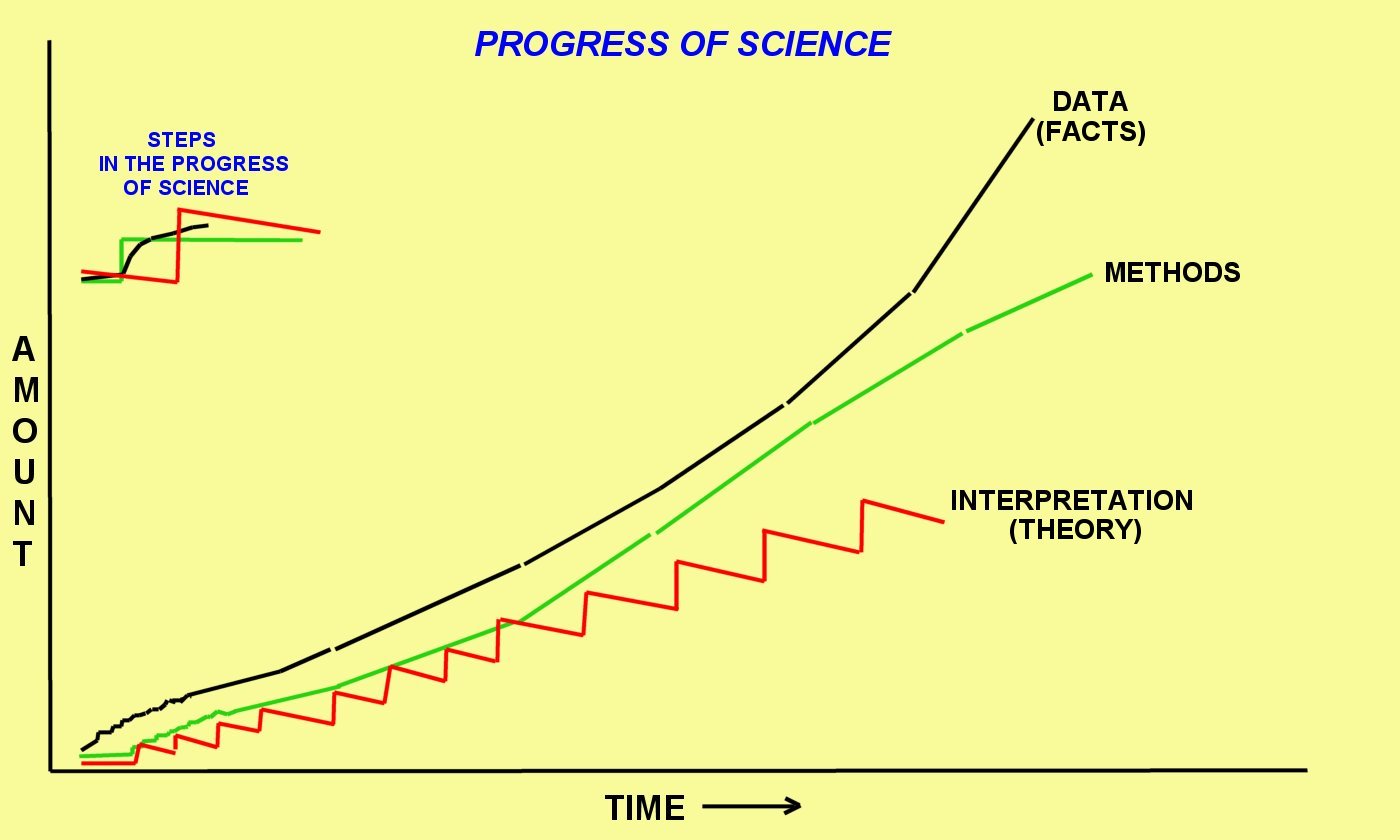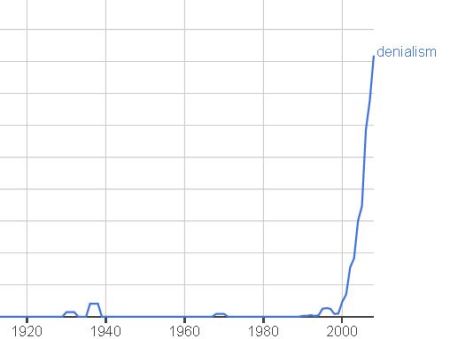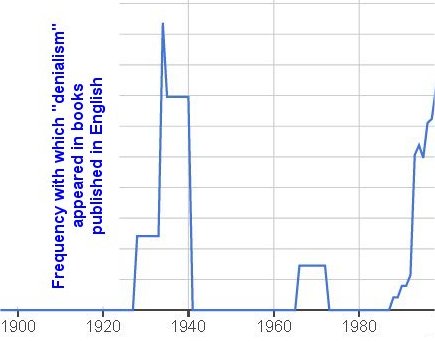Denialism and pseudo-science
Posted by Henry Bauer on 2018/03/31
Nowadays, questioning whether HIV causes AIDS, or whether carbon dioxide causes global warming, is often deplored and attacked as “denialism” or pseudo-science. Yet questioning those theories is perfectly good, normal science.
Science is many things, including a human activity, an institution, an authority, but most centrally science means knowledge and understanding. Pseudo-science correspondingly means false claims dressed up as though they were reliable, genuine science. Denialism means refusing to believe what is unquestionably known to be true.
Knowledge means facts; understanding means theories or interpretations; and an essential adjunct to both is methodology, the means by which facts can be gathered.
There is an important connection not only between methods and facts but also between facts and theories: Un-interpreted facts carry no meaning. They are made meaningful only when connected to a conceptual framework, which is inevitably subjective. That is typically illustrated by diagrams where the facts consist of black and white lines and areas whose meaning depends on interpretations by the viewer. Different observers offer different interpretations.
The meanings of these facts — black-and-white lines and areas — are supplied by the viewer:
A young lady with extravagant hair treatment facing left — OR an old crone looking downwards;
A duck facing left OR a rabbit facing right;
Twin black profiles looking at one another OR a white vase.
In science, researchers often differ over the interpretation of the evidence: the facts are not disputed but different theories are offered to explain them.
At any rate, in considering what science can tell us we need to consider the three facets of science: facts, methods, and theories [1]. Normal scientific activity is guided by established theories and applies established methods to enlarge the range of factual knowledge.
Every now and again, something unconventional and unforeseen turns up in one of those three facets of science. It might be a new interpretation of existing facts, as in the theory of relativity; or it may be the application of a novel method as in radio-astronomy; or it may be the observation of previously unsuspected happenings, facts, for instance that atoms are not eternally stable and sometimes decompose spontaneously. When something of that sort happens, it is often referred to later as having been a scientific revolution, overturning what had been taken for granted in one facet of science while remaining content with what has been taken for granted in the other two facets.
The progress of science can be viewed as revolutions in facts, or in method followed by the gaining of possibly revolutionary facts, followed eventually by minor or major revisions of theory. Over a sufficiently long time — say, the several centuries of modern (post-17th-century) science — the impression by hindsight is of continual accumulation of facts and improvement of methods; the periodic changes in theoretical perspective are all that tends to be remembered by other than specialist historians of science.

(from “Why minority views should be listened to”)
The history of science also records episodes in which researchers proposed something novel simultaneously in two facets of science, for example when Gregor Mendel applied simple arithmetic to observations of plant breeding, an unprecedented methodology in biology that thereby uncovered entirely new facts. Another example might be the suggestion by Alfred Wegener in the early decades of the 20th century that the Earth’s continents must have moved, since the flora and fauna and geological formations are so alike on continents that are now far apart; making comparisons across oceans was an entirely novel methodology, and there was no theory to accommodate the possibility of continents moving. Episodes of that sort, where two of the three facets of science are unorthodox, have been labeled “premature science” by Gunther Stent [2]; the scientific community did not accept these suggestions for periods of several decades, until something more conventional showed that those unorthodox proposals had been sound.
When claims are made that do not fit with established theory or established methods or established facts, then those claims are typically dismissed out of hand and labeled pseudo-science. For example, claims of the existence of Loch Ness “monsters” involve unorthodox facts obtained by methods that are unorthodox in biology, namely eyewitness accounts, sonar echoes, photographs, and films, instead of the established way of certifying the existence of a species through the examination of an actual specimen; and the theory of evolution and the accepted fossil record have no place for the sort of creature that eyewitnesses describe.
In recent years it has it has been quite common see dissent from established scientific theories referred to as “denialism”. The connotation of that term “denialism” is not only that something is wrong but that it is reprehensibly wrong, that those who question the established view should know better, that it would be damaging to pay attention to them; moreover that denying (for example) that HIV causes AIDS is as morally distasteful as denying the fact of the Holocaust in which millions of Jews, Gypsies, and others were killed.
As Google N-grams for “denialism” indicate, until the last couple of decades, “denialism” meant to deny historical facts of genocide or something like it:
In the 1930s, “denialism” was applied to the refusal to acknowledge the millions of deaths in the Soviet Union caused by enforcement of collectivized agriculture and associated political purges, for example the 1932-33 Ukraine famine [3]. Holocaust denial was prominent for a while around 1970 but then faded away from mention in books until it re-appeared in the late 1980s [4]. But soon “denialism” directed at questioning of HIV/AIDS theory and the theory of carbon-dioxide-induced global warming swamped all other applications of the term:

This recent usage of “denialism” is consciously and specifically intended to arouse the moral outrage associated with denial of genocides, as admitted (for example) by the South African jurist Edwin Cameron [5]. But those genocides are facts, proved beyond doubt by the records of deaths as well as remains and various artefacts at concentration camps. By contrast, so-called “AIDS denialism” and so-called “climate-change denialism” or “global warming denialism” are the questioning or disputing of theories, not facts.
That questioning, moreover, is perfectly consonant with normal science:
⇒⇒ On the matter of whether HIV causes AIDS, dissidents do not question anything about established methods of virology, and they do not claim that HIV tests do not measure proteins, antibodies, and bits of genetic material; they merely assert that the results of HIV tests do not fit the theory that HIV is an infectious agent, and they assert that the methods used in HIV AIDS research are not sound methods for studying viruses since they have not been verified against experiments with authentic pure HIV virions derived directly from HIV+ individuals or from AIDS patients (The Case against HIV).
⇒⇒ On the matter of whether the liberation of carbon dioxide and by the burning of fossil fuels is the primary cause of global warming and climate change (AGW, Anthropogenic Global Warming and climate change [ACC]), those who question that theory do not question the facts about amounts of carbon dioxide present over time and they do not question the changes that have taken place in temperatures; they merely point out that the known and accepted facts show that there have been periods of time during which carbon-dioxide levels were very high while temperatures were very low, and that during several periods when carbon-dioxide levels were increasing the Earth’s temperature was not increasing or perhaps even cooling [6]. Furthermore, those who question AGW point out that the prime evidence offered for the theory is no evidence at all, merely the outputs of computer models that are supposed to take into account all the important variables — even as it is obvious that they do not do that, since those computer models do not provide an accurate record of the actual temperature changes that have been observed over many centuries.
Denialism means to deny something that is unquestionably true, but theories, interpretations, can never be known to be unquestionably true. Labeling as denialists those who question whether HIV causes AIDS, or those who question whether human-caused generation of carbon dioxide is the prime cause of global warming and climate change, is an attempt to finesse having to properly demonstrate the validity of those theories. Another attempt at such evasion is the oft-heard assertion that there is an “overwhelming consensus” on those matters. As Michael Crichton put it:
the claim of consensus has been the first refuge of scoundrels; it is a way to avoid debate by claiming that the matter is already settled. . . . Consensus is invoked only in situations where the science is not solid enough. Nobody says the consensus of scientists agrees that E=mc2. Nobody says the consensus is that the sun is 93 million miles away. It would never occur to anyone to speak that way [7].
When the assertion of consensus does not suffice, then the ad hominem tactic of crying “denialism” is invoked: the last refuge of intellectual scoundrels who cannot prove their case by evidence and logic.
=================================================
[1] I first suggested this in “Velikovsky and the Loch Ness Monster: Attempts at demarcation in two controversies”, in a symposium on “The Demarcation between Science and Pseudo-Science” (ed. Rachel Laudan), published as Working Papers of the Center for the Study of Science in Society (VPI&SU), 2 (#1, April 1983) 87-106. The idea was developed further in The Enigma of Loch Ness: Making Sense of a Mystery (University of Illinois Press, 1986/88; reprint, Wipf & Stock, 2012; pp. 152-3); see also Science or Pseudoscience: Magnetic Healing, Psychic Phenomena, and Other Heterodoxies (University of Illinois Press, 2001); Science Is Not What You Think (McFarland, 2017)
[2] Gunther Stent, “Prematurity and uniqueness in scientific discovery”, Scientific American, December 1972, pp. 84–93
[3] Described as the Holodomor
[4] Holocaust Denial Timeline
[5] Edwin Cameron, Witness to AIDS, I. B. Tauris, 2005; see book review in Journal of Scientific Exploration, 20 (2006) 436-444
[6] Climate-change facts: Temperature is not determined by carbon dioxide
[7] Michael Crichton, “Aliens cause global warming”, Caltech Michelin Lecture, 17 January 2003







nickreality65 said
K-T and assorted clone diagrams of atmospheric power flux balances include a GHG up/down/”back” LWIR energy loop of about 330 W/m^2 which violates three basic laws of thermodynamics: 1) energy created out of thin air, 2) energy moving (i.e. heat) from cold to hot without added work, and 3) 100% efficiency, zero loss, perpetual looping.
One possible defense of this critique is that USCRN and SURFRAD data actually measure and thereby prove the existence of this up/down/”back” LWIR energy loop. Although in many instances the net 333 W/m^2 of up/down/”back” LWIR power flux loop exceeds by over twice the downwelling solar power flux, a rather obvious violation of conservation of energy.
And just why is that?
Per Apogee SI-100 series radiometer Owner’s Manual page 15. “Although the ε (emissivity) of a fully closed plant canopy can be 0.98-0.99, the lower ε of soils and other surfaces can result in substantial errors if ε effects are not accounted for.”
Emissivity, ε, is the ratio of the actual radiation from a surface and the maximum S-B BB radiation at the surface’s temperature. Consider an example from the K-T diagram: 63 W/m^2 / 396 W/m^2 = 0.16 = ε. In fact, 63 W/m^2 & 289 K & 0.16 together fit just fine in a GB version of the S-B equation. What no longer fits is the 330 W/m^2 GHG loop which vanishes back into the mathematical thin air from whence it came.
“Their staff is too long. They are digging in the wrong place.”
“There is no spoon.”
And
Up/down/”back” GHG radiation of RGHE theory simply:
Does
Not
Exist.
Which also explains why the scientific justification of RGHE is so contentious.
https://www.linkedin.com/feed/update/urn:li:activity:6384689028054212608
LikeLike
Henry Bauer said
Thanks, but too technical for most of us
LikeLike